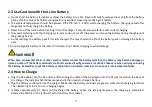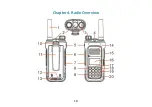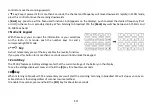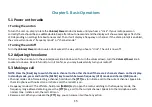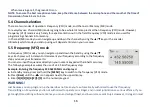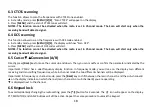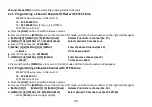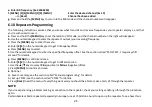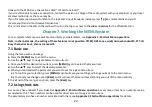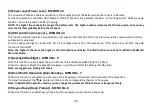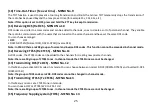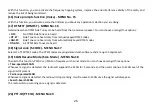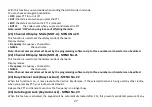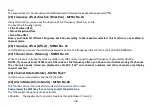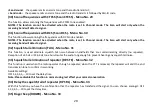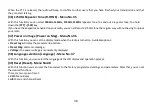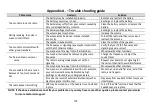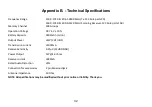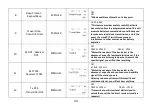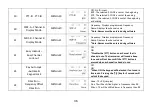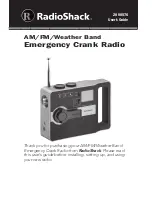
21
e. Enter RX frequency (Ex. 43266250)
f.
[MENU] [2][6] [MENU] [1][0] [MENU]
Enter the desired channel (Ex 10)
-->> [Back]
Channel has been added
g.
Press and hold the
[MENU]
key to return to the MR mode and the channel number will reappear.
6.10 Repeaters Programming
The following instructions assume that you know what transmit and receive frequencies your repeater employs, and that
you're authorized to use it.
a.
Press and hold the
[MENU]
key to set the radio to VFO mode, and the channel number on the right will disappear.
b.
Use the numeric keypad to enter the repeater's output (your receiving) frequency.
c.
Press the
[MENU]
key to enter the menu.
d.
Enter
[2][5]
on the numeric keypad to get to frequency offset.
e.
Press
[MENU]
key to select.
f.
Use the numerical keypad to enter the specified frequency offset. See the section called “25 OFFSET - Frequency shift
amount” for details.
g.
Press
[MENU]
to confirm and save.
h.
Enter
[2][4]
on the numeric keypad to get to offset direction.
i.
Use the
▲
/
▼
keys to select
Plus
(positive) or
Minus
(negative) offset.
j.
Press
[MENU]
to confirm and save.
k.
Optional:
a). Save to memory, see the section called “Manual programming” for details.
b). Set up CTCSS; see the section called “CTCSS” for details.
l.
Press
[Back]
to exit the menu. If everything went well, you should be able to make a test call through the repeater.
NOTE:
If you're experiencing problems making a connection to the repeater, check your settings and/or go through the procedure
again.
Certain Amateur Radio repeaters (especially in Europe) use a 1750Hz tone burst to open up the repeater. To see how this is
Summary of Contents for Pofung P10UV Series
Page 1: ...USER S MANUAL...
Page 13: ...10 Chapter4 Radio Overview...

